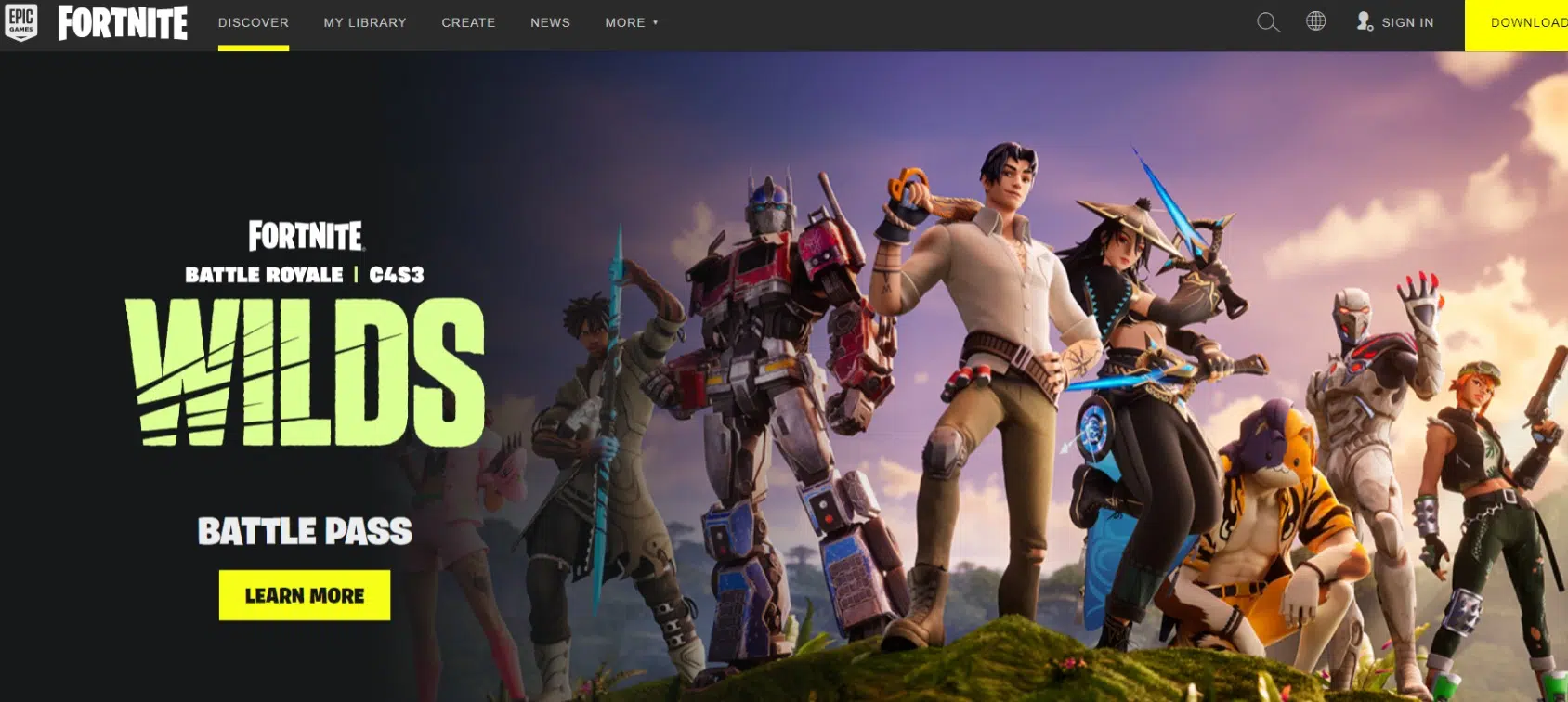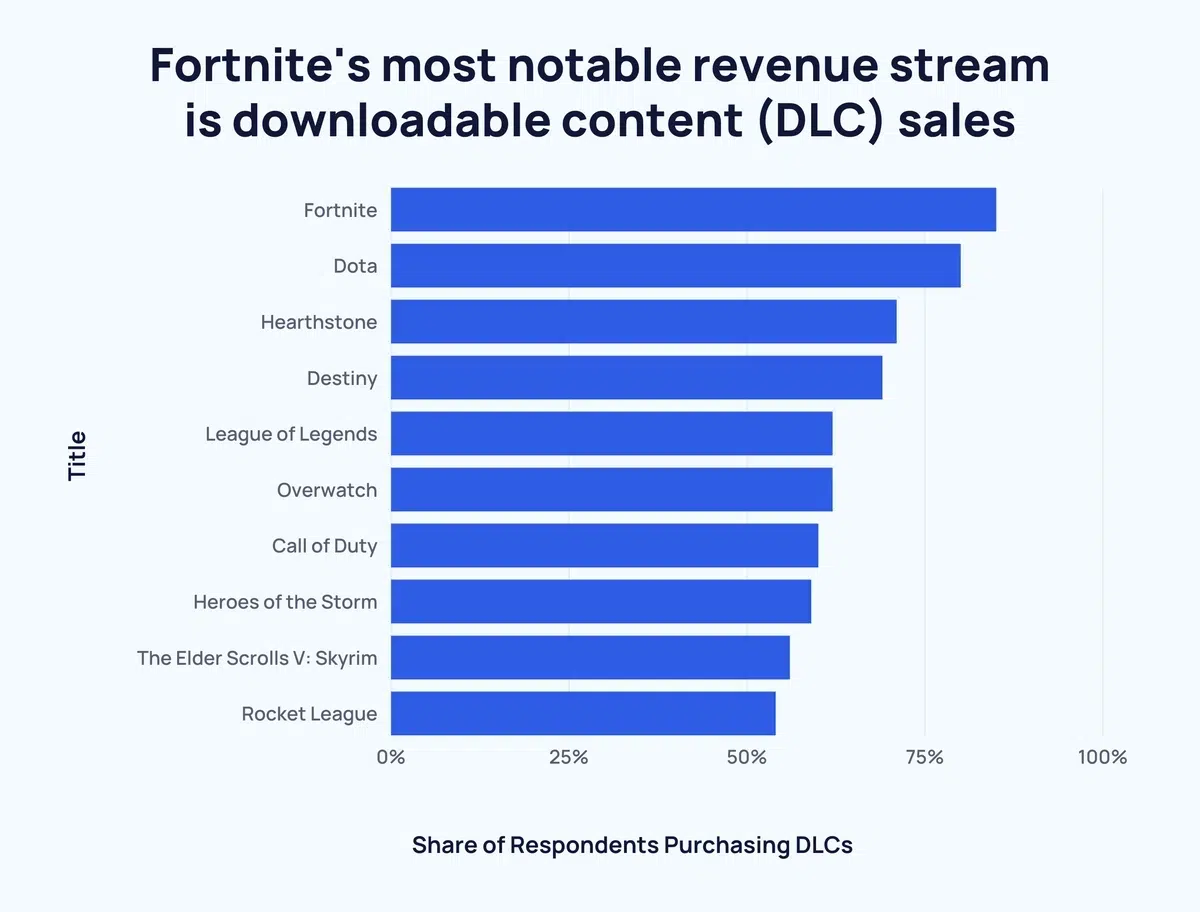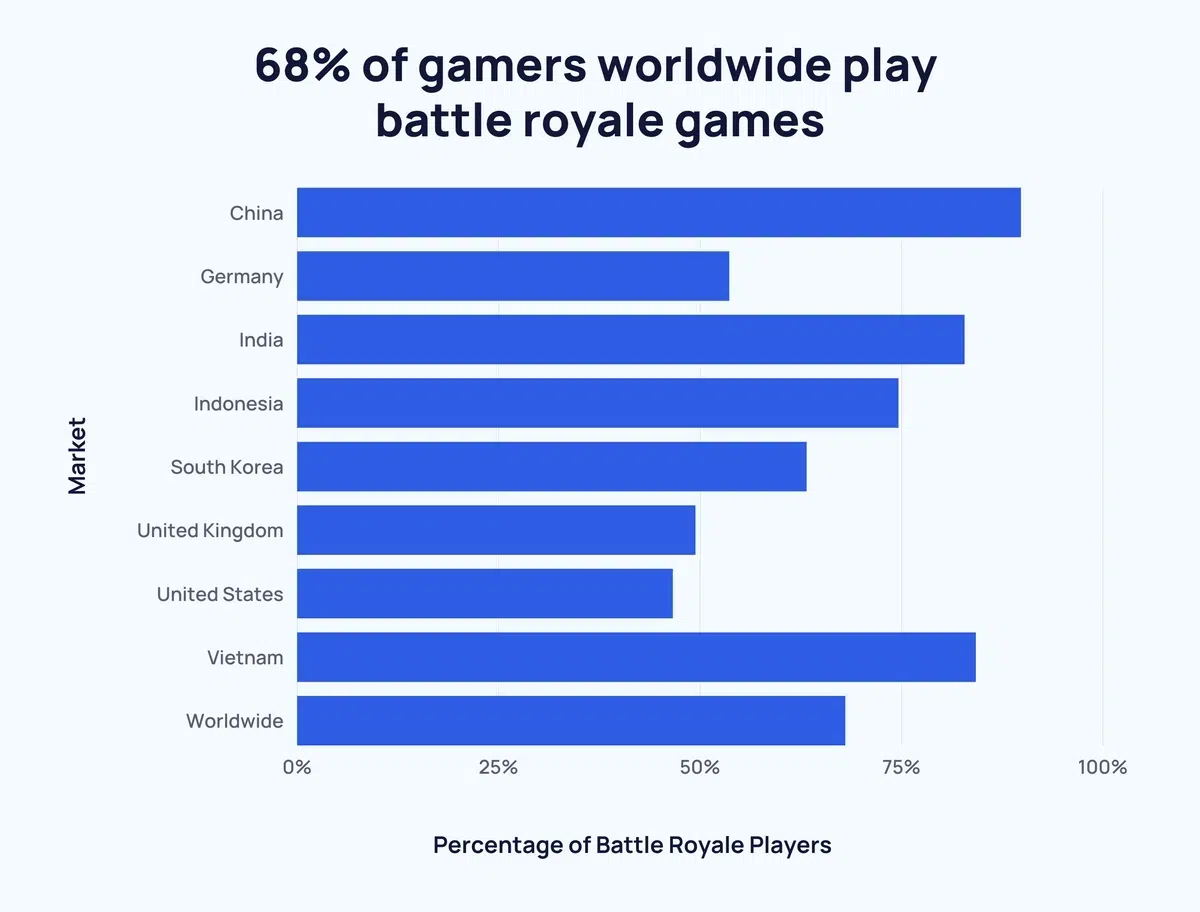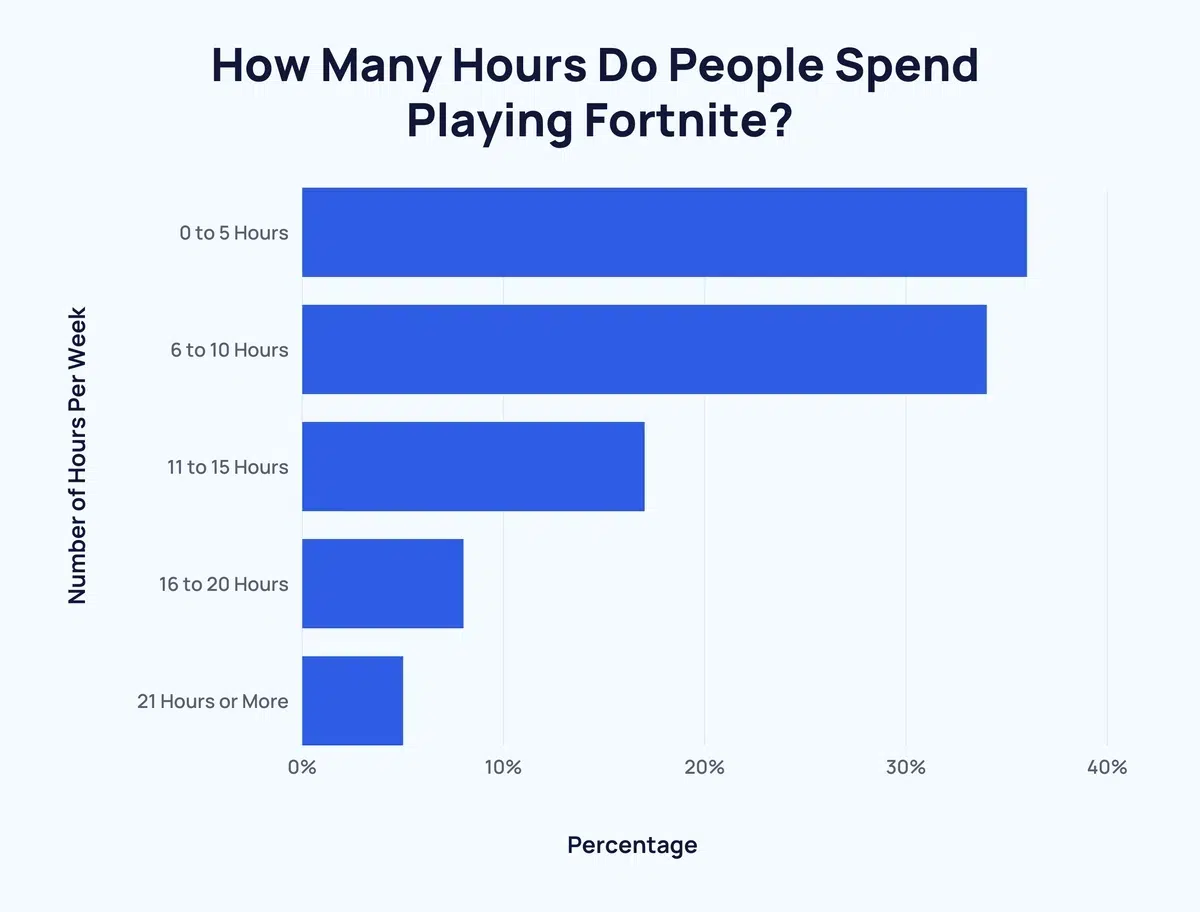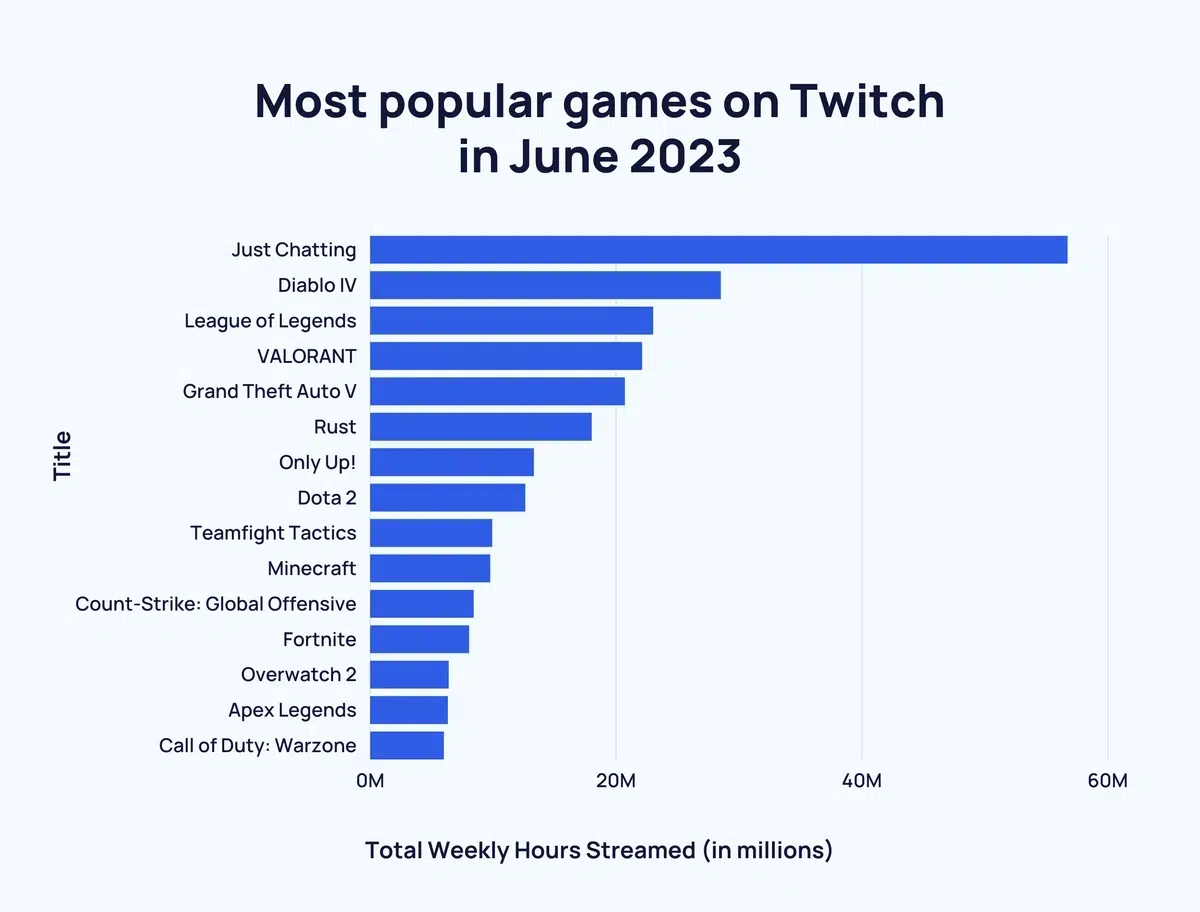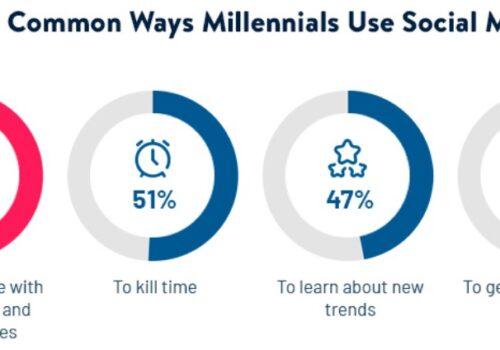Fortnite isn’t just any game; it’s a worldwide sensation with millions of players joining from all corners of the globe.
I’m here to share some astonishing numbers about just how popular Fortnite really is. So, whether you’re a gamer or just curious about this phenomenon, get ready to be amazed by the world of Fortnite!
The game’s free-to-play model has contributed significantly to its success, drawing in a vast community eager to engage with its gameplay, collaborations, and partnerships with prominent mainstream figures such as Ariana Grande, Travis Scott, and Marvel.
With ongoing efforts to enhance the game and the introduction of Creative 2.0 reigniting players’ passion for Fortnite, a fundamental question arises: What is the current player base of Fortnite in 2023? Is the battle royale phenomenon showing signs of decline, or is it on an upward trajectory?
Let’s explore the Fortnite statistics to find out.
Getting to Know Fortnite
- Back in the spotlight since September 26, 2017.
- Located in Cary, North Carolina, as its headquarters.
- Leading the charge are notable individuals like Tim Sweeney, who holds the CEO position, and Donald Mustard, who serves as the chief creative officer.
- Functioning as a private entity, driving its endeavors.
- A valued member of the Epic Games umbrella.
- Flourishing within the dynamic gaming industry.
Important Figures About Fortnite
- In the year 2023 alone, Fortnite brought in a massive $5.9 billion in revenue for Epic Games.
- While it was still available, Fortnite managed to accumulate a lifetime mobile revenue of $1.1 billion.
- The game boasts a player base of roughly 400 million registered individuals, with around 83 million of them participating on a monthly basis.
- An impressive 60 percent or more of these players fall within the age range of 18 to 24 years old.
Fortnite revenue
| Year | Revenue ($bn) |
| 2018 | 5.4 |
| 2019 | 3.7 |
| 2020 | 5.1 |
| 2021 | 5.8 |
| 2022 | 5.21 |
| 2023 | 5.9 |
From this revenue data, it’s evident that Fortnite’s financial success has been consistent and even growing over the years.
The game’s revenue climbed from $3.7 billion in 2019 to $5.8 billion in 2021, surpassing its earlier record of $5.4 billion in 2018.
The game’s projected revenue for 2022 is $5.21 billion, while it is expected to reach $5.9 billion in 2023.
This growth indicates the game’s strong appeal and engagement among players, contributing to its position as a lucrative venture for Epic Games.
Source: Epic Games
Fortnite Player Growth Over Time:
| Date | Registered Players |
|---|---|
| 2017 | 20 million |
| 2018 | 125 million |
| 2019 | 250 million |
| 2020 | 350 million |
| 2021 | 450 million |
| 2022 | 500 million |
| 2023 | 650 million |
The data shows a remarkable growth trajectory in Fortnite’s player base since its inception.
The number of registered players started at around 1 million just one month after its launch in August 2017. By the end of the same year, this figure skyrocketed to 30 million, indicating a rapid rise in popularity.
In January 2018, the player count continued to surge to approximately 45 million, demonstrating sustained interest.
The growth didn’t slow down; within a little over a year from its launch, the game’s registered players reached a staggering 200 million, underscoring its widespread appeal and global reach.
This trend persisted, and by May 2020, the number had surged even higher to 350 million players.
Considering this trend and the game’s continuous updates and additions, it’s estimated that the player count has likely crossed the 400 million mark since then.
Source: (explodingtopics.com)
This consistent and exponential growth in the player base highlights the immense popularity and cultural impact of Fortnite on a global scale.
It’s a testament to the game’s ability to attract and engage players across various demographics and regions.
Sources: VGChartz, BusinessofApps
How Fortnite Generates Revenue
Fortnite, a prominent Free-to-Play (F2P) game, has achieved massive success in the gaming industry.
While being free to play, the game has implemented various lucrative revenue strategies, contributing to its financial success.
One of Fortnite’s main sources of revenue is the sale of downloadable content (DLC). This includes in-game items, skins, outfits, emotes, and other virtual goods that players can purchase to customize their characters and enhance their gaming experience.
Players are drawn to these items for their visual appeal and the personalization they offer.
A comparison of DLC purchasing behavior across various popular games underscores Fortnite’s prowess in generating revenue:
| Rank | Title | Share of Respondents Purchasing DLCs | Difference to Fortnite |
| #1 | Fortnite | 85% | – |
| #2 | Dota | 80% | 5% |
| #3 | Hearthstone | 71% | 14% |
| #4 | Destiny | 69% | 16% |
| #5 | League of Legends | 62% | 23% |
| #6 | Overwatch | 62% | 23% |
| #7 | Call of Duty | 60% | 25% |
| #8 | Heroes of the Storm | 59% | 26% |
| #9 | The Elder Scrolls V: Skyrim | 56% | 29% |
| #10 | Rocket League | 54% | 31% |
For Fortnite players, investing in DLC is a common practice, with 77% of 1,000 respondents in February 2020 stating they had made in-game purchases. This indicates the substantial appeal and demand for the offered content.
Source: (explodingtopics.com)
The amount spent on in-game purchases has shown an upward trend over the years:
- In 2018, players spent an average of approximately $84.67 on DLC per year.
- By 2020, this average expenditure increased by around 21% to $102.42.
- Comparing these figures to the cost of traditional AAA games, which usually range from $60 to $70, highlights how DLC sales effectively compensate for the absence of an initial purchase fee.
The success of Fortnite’s DLC sales is further underscored by its ability to engage players and provide items that resonate with them.
This not only sustains ongoing player interest but also generates substantial revenue streams for Epic Games.
Fortnite’s revenue
Here’s a breakdown of Fortnite’s revenue in 2019, along with the influence of special events on its earnings:
- Jan 2019: The “Ice Storm” major event contributed to revenue of $350 million, setting the tone for the year.
- Feb 2019: The “Showtime” concert event, coupled with the “Earthquake” minor event, boosted revenue to $398 million, a notable increase of $48 million from January.
- Mar 2019: Revenue decreased slightly to $361 million, indicating a drop of $37 million.
- Apr 2019: Revenue further decreased to $321 million, reflecting a decrease of $40 million.
- May 2019: The “Unvaulting” major event led to a significant revenue increase to $420 million, marking a notable rise of $99 million.
- Jun 2019: Revenue dropped to $272 million, showing a decrease of $148 million.
- Jul 2019: The “Final Showdown” major event and the “Zero Point Destabilization” minor event resulted in a revenue of $267 million, a decrease of $5 million.
- Aug 2019: Revenue rebounded to $314 million, with a $47 million increase from July.
- Sep 2019: Revenue decreased to $200 million, experiencing a notable decline of $114 million.
- Oct 2019: The “The End” major event marked a revenue increase to $272 million, rising by $72 million.
- Nov 2019: Revenue dropped to $190 million, representing a decrease of $82 million.
- Dec 2019: The “Live At Risky” Star Wars collaboration major event significantly boosted revenue to $340 million, reflecting an impressive increase of $150 million.
From this data, it’s evident that Epic Games‘ special events have significantly impacted Fortnite’s revenue.
In months featuring special events, especially those with major events like The Unvaulting and The End (Chapter 1), there was a notable increase in revenue.
While some months without events experienced decreases in revenue, the overall trend indicates that special events drive a substantial portion of Fortnite’s earnings.
In the six months with events, Fortnite generated $2.047 billion in revenue, compared to $1.658 billion in the non-event months, showcasing the significance of these events in boosting revenue by 23.46%.
Source: The Verge, Fortnite Wiki, Eurogamer
How Many Hours Do People Spend Playing Fortnite?
Here’s a breakdown of Fortnite players’ weekly playing habits and their engagement during special events:
Weekly Playing Habits: A 2020 survey of 1,000 Fortnite players shed light on their weekly gaming habits:
| Number of Hours Per Week | Percentage |
| 0 to 5 Hours | 36% |
| 6 to 10 Hours | 34% |
| 11 to 15 Hours | 17% |
| 16 to 20 Hours | 8% |
| 21 Hours or More | 5% |
The survey suggests that a significant portion of Fortnite players dedicate a considerable amount of their weekly gaming time to the title.
Source: (explodingtopics.com)
Notably, 70% of players reported playing under 10 hours per week, with “0-5 hours” being the most common response, while 1 in 20 players spent over 21+ hours per week playing the game.
Engagement During Special Events: Epic Games strategically leverages special events to attract players and boost engagement.
Here are some examples of how these events have driven concurrent player numbers:
| Date | Event | Concurrent Players |
| November 2018 | Destruction of the Purple Cube | 8.3 million |
| February 2019 | Marshmello Concert | 10.7 million |
| April 2020 | Travis Scott Concert | 12.3 million |
| November 2020 | Galactus Event | 15.3 million |
These events result in significant spikes in concurrent players, indicating the success of Epic Games’ approach to integrating special events into the game.
For instance, the Galactus Event in November 2020 drew a remarkable 15.3 million concurrent players, demonstrating the strong engagement and interest generated by these unique experiences.
Source: LendEDU, Marketing Charts, The Verge
Fortnite player demographics
Here’s a breakdown of Fortnite player demographics based on age and gender:
Age Distribution: A 2018 analysis in the US highlighted the age distribution of Fortnite players:
| Age Range | Percentage |
| 18 to 24 years | 62.7% |
| 25 to 34 years | 22.5% |
| 35 to 44 years | 12.7% |
| 45 to 54 years | 2% |
The analysis underscores that the majority of Fortnite players are in the 18 to 24 years age range, with over 62% falling into this category. The age distribution reveals a strong attraction among younger players.
Gender Distribution: The same survey also explored the gender distribution among Fortnite players:
| Gender | Percentage |
| Male | 72.4% |
| Female | 27.6% |
The data indicates that around 72% of Fortnite players are male, while approximately 28% are female.
These demographics suggest that Fortnite has a predominantly young player base, with the majority of players falling within the 18 to 24 years age range.
Additionally, the gender distribution highlights a higher representation of male players within the game.
Is Fortnite Losing Popularity?
With millions of players engaging daily in 2022 and live events still drawing significant attention, it’s evident that Fortnite is far from losing its appeal. The game continues to maintain its widespread popularity, even during quieter periods.
While there was a bit of a downturn for Fortnite towards the conclusion of Chapter 2, the recent launch of Chapter 4 has revitalized player interest.
This new chapter brings exciting additions like new weapons and dirt bikes, sparking a resurgence of players.
Source: (explodingtopics.com)
Furthermore, the Dragon Ball Super crossover, a recent addition to the game, created a buzz among anime enthusiasts.
The crossover led to a surge of players looking to grab unique skins and unlock cosmetic items from the popular series. This underlines the fact that Fortnite remains a significant player in the gaming world.
Whether Fortnite’s player base is expanding or contracting, its cultural impact is undeniable.
The game has left a lasting imprint on gaming culture, ensuring its influence will continue regardless of the game’s trajectory.
The player base of Fortnite has experienced fluctuations in recent months, although the decline hasn’t been severe enough to impact their sales significantly.
These numbers, sourced from Active Player, shed light on the monthly changes in active players:
Active Player shed light on the monthly changes in active players:
| Month | Monthly Active Players | Monthly Gain/Loss | Monthly Gain/Loss % |
| Last 30 Days | 252,600,145 | +943,638 | +0.37% |
| December 2022 | 251,656,507 | +1,511,751 | -0.60% |
| November 2022 | 250,144,756 | -880,842 | -0.35% |
| October 2022 | 251,025,598 | –2,539,412 | -1.00% |
| September 2022 | 253,565,010 | –3,839,113 | -1.49% |
| August 2022 | 257,404,123 | +2,389,710 | +0.94% |
| July 2022 | 255,014,413 | -9,486,753 | -3.59% |
It’s important to note that a significant portion of players left Fortnite due to the lawsuit against Apple, resulting in the game’s removal from the App Store.
However, beyond this specific incident, Fortnite hasn’t reported any substantial declines in player numbers.
The game’s popularity remains resilient, with fluctuations likely influenced by various factors, including content updates and external events.
FAQs
🎮 How many people are playing Fortnite in 2024?
As of the last update, Fortnite has a player base of around 400 million registered users. The monthly player count is around 239 million on average.
👾 What percentage of Fortnite players are in the 18-24 age range?
A big chunk of Fortnite's players, over 60%, are young adults aged 18 to 24 years old.
🕹️ How much time do players spend on Fortnite each week?
Most players, about 70%, play Fortnite for less than 10 hours a week. A small group, about 5%, play more than 21 hours weekly.
📱 Can you play Fortnite on mobile devices?
Yes! Fortnite is available on multiple platforms, including mobile, which has significantly increased its accessibility and player count.
🌐 Is Fortnite still popular, or is it losing its charm?
Fortnite is still rocking the gaming world! With millions playing daily and big events drawing crowds, its popularity isn't fading anytime soon.
You may also read:
- Latest Top Best Android Multiplayer Games in August
- Ways to Make Money Playing Video Games
- Top Profitable Ways To Earn Money From Pubg
- MoboMarket for Android:Download Free Android Games Apps
- Google Snake Hack
- Vavada Casino Affiliate Program: Earn Extra Passive Income!
Popular Videos on Fortnite :
Conclusion: How Many People Play Fortnite
Fortnite’s remarkable global triumph has had a profound impact on both the free-to-play gaming model and the battle royale genre as a whole.
Even in 2023, the game maintains its significance, managing to retain its relevance by consistently drawing in players, viewers, and partnerships through various collaborations.
This ongoing engagement speaks to the enduring appeal and influence of Fortnite within the gaming landscape.


